It is not enough to have illustrious parents and lineages to be happy. The life of a queen, a princess, or a royal descendant did not belong to her: from her birth, a royal girl was a valuable commodity in the European marriage market, especially if her parents were the Catholic monarchs – Ferdinand of Aragon and Isabella of Castile. An older sister of Charles von Habsburg (later Holy Roman Emperor Charles V), Eleanor of Austria was born in Leuven on the 15th of November, 1498 to Philip the Handsome, Duke of Burgundy, and Juana of Castile. Juana became known as Juana the Mad due to either her real mental instability or the machinations of her relatives – her father and her eldest son, Charles, who needed her to be imprisoned so as to rule in her stead.
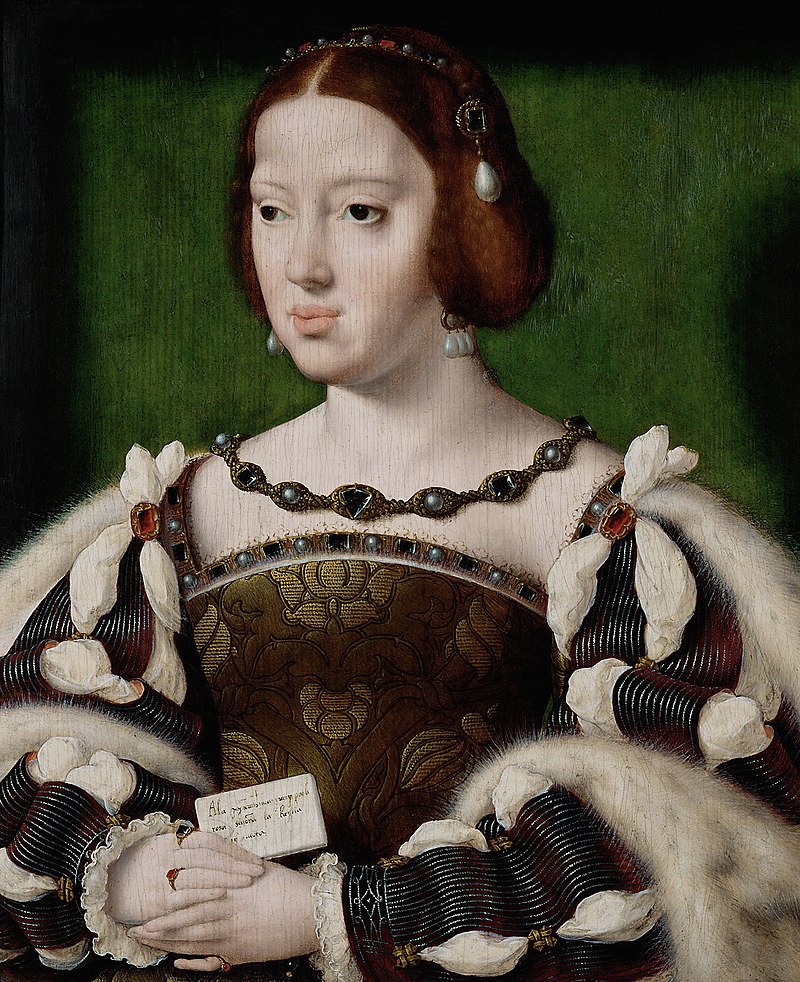
Eleanor’s mother inherited the Crowns of Castile and Aragon from her mother, Isabella. The early death of her father, Philip, in 1506 was followed by the declaration of Juana’s mental illness and her subsequent confinement to the Palacio Real de Tordesillas (Royal Palace of Tordesillas), where she would spend many decades before dying in 1555. Although Eleanor did not have her mother in childhood, she, Charles, and their sister Isabella (future Queen of Denmark) were raised by her affectionate aunt, Margaret of Austria, at her dazzling Renaissance court at Mechelen. They all received a stellar education and blossomed in the care and love of Margaret. Their two other siblings – Ferdinand (later Holy Roman Emperor Ferdinand I) and Catherine of Austria (future Queen of Portugal) grew up in Spain. Eleanor and Charles came to Spain in 1517.
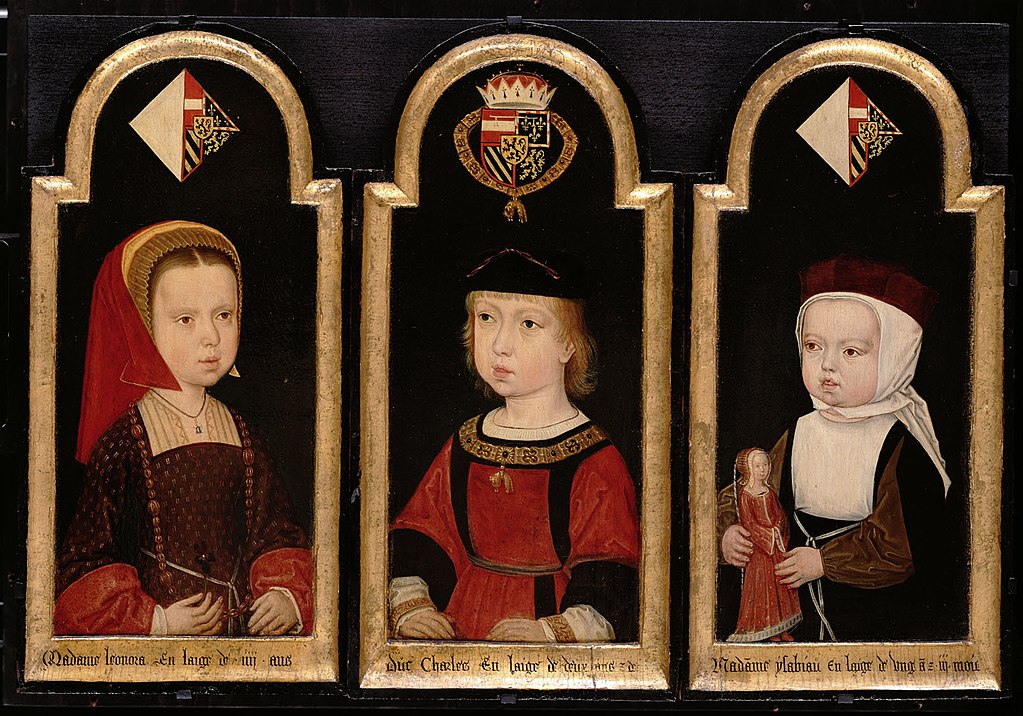
Her grandfather – Holy Roman Emperor Maximilian I – wanted to secure a great match for Eleanor. A betrothal with Henry Tudor, at first only Duke of York, was discussed, and Henry became an attractive option after the death of his older brother, Prince Arthur of Wales, in 1502. However, the negotiations did not come to fruition, and King Henry VIII married Eleanor’s aunt, Catherine of Aragon. The engagements to the Polish King Sigismund I and to Antoine, Duke de Lorraine, were considered, but nothing came out of this. Due to the fragile health of Claude of France, King François I’s wife, the French feared that she might die in childbirth, and there were rumors about Eleanor’s possible marriage to François as early as in 1518, but Claude survived.
Eleanor’s first love seems to have been Frederick II, Elector Palatine. Her brother, Charles, once discovered her reading a love letter from Frederick, much to his displeasure. An incensed Charles compelled Eleanor and Frederick to swear on the sacrament that they were not secretly married, and then the young sweethearts were permanently separated. Soon after their relocation to Spain, Eleanor was used as a marriage pawn: in 1518, she became the wife of a widowed King Manuel of Portugal called the Fortunate, who was her uncle by marriage and a husband of her deceased aunts – Isabella of Aragon and Maria of Aragon. This sounds weird to us, modern readers, yet it was entirely normal back then, especially for the House of Habsburg that practiced intermarriages for centuries and was one of the most inbred ruling dynasties in Europe. Manuel and Eleanor had 2 children together: Infante Charles who died in infanthood, and Infanta Maria, who would later become one of the richest princesses but would never marry.
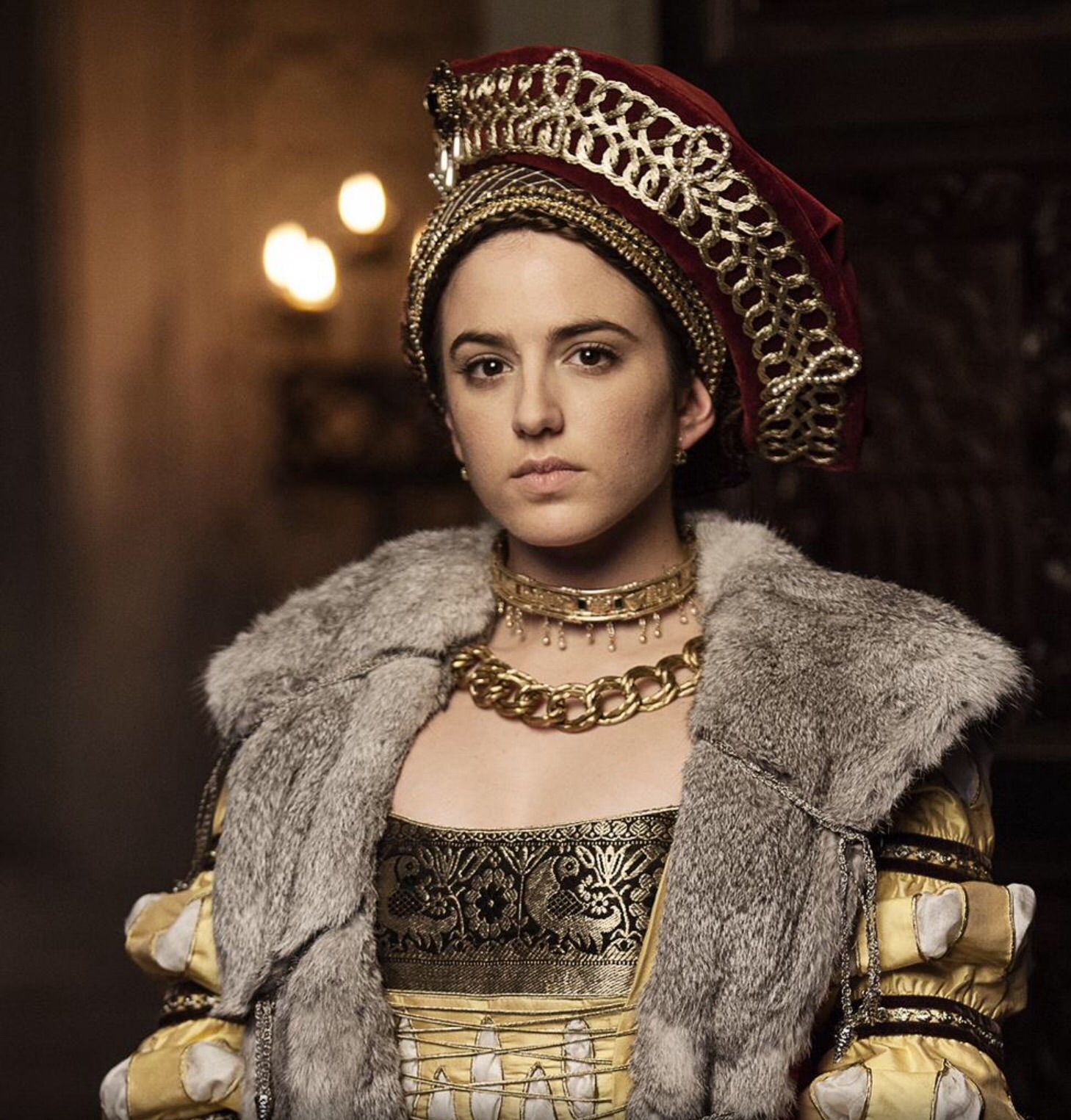
A widowed Eleanor was recalled to Spain by her brother. The Spanish series ‘Carlos rey emperador’ (‘Emperor Charles V) invented a dramatic storyline for Eleanor: soon after her old husband’s death, Eleanor started an affair with his son, King Joan III of Portugal, and conceived his baby. In real history, it did not happen, although Eleanor’s union with John had indeed been discussed, but when his father had lost his second wife, Maria of Aragon, Eleanor had been married off to Manuel of Portugal. In 1523, Eleanor was engaged to Charles III, Duke de Bourbon and the treacherous Constable of France, to cement an alliance between the emperor and Bourbon against France. The Constable de Bourbon, who was stripped of his lands and wealth in France, eagerly waited for this marriage, but Eleanor saw him as a lowborn man for her.
Eleanor must have been happy when the engagement was broken, although we know not what she thought of Bourbon’s role in the barbaric sack of Rome of 1527. When the rumors about Claude of France’s deteriorating health flooded Europe, Charles asked his ambassadors to broach the subject of Eleanor’s possible union with François I of France. This time, Claude indeed died, and she was greatly mourned by François and her subjects. Yet, Charles did not need to negotiate this marriage to Eleanor: the French suffered a disastrous defeat at the Battle of Pavia of 1525, and the Valois ruler was taken prisoner by the Imperial forces. During his imprisonment in Madrid, François was kept in awful conditions and caught a severe cold, which almost resulted in his death. François was extremely lucky that his sister, Marguerite d’Angoulême, came to Spain, convinced Charles to treat his brother better, and nursed François back to health in better living conditions. The compassionate Eleanor advised the emperor to treat his notable captive better, but Charles dismissed her advice, for his hatred of France and the House of Valois was too strong.
During Marguerite’s stay in Spain, the King of France’s sister befriended Eleanor of Austria. Marguerite, who idolized her brother, described François as a romantic and chivalrous knight, which was mostly true because of François’ principles of chivalry and courtly love. Nonetheless, Margot created an idealized image of François in Eleanor’s head, deliberately or not. In any case, it helped as Eleanor became very sympathetic to François’ cause. With the help of Marguerite and his jailor, the French ruler gave Eleanor a love letter, and François knew how to captivate women with poems, letters, gifts, and intense courtship. We do not know its content, but Eleanor grew infatuated with François and was flattered by his attention. Elated by the prospect of marrying the handsome Valois king, Eleanor soon commenced calling herself Queen of France.
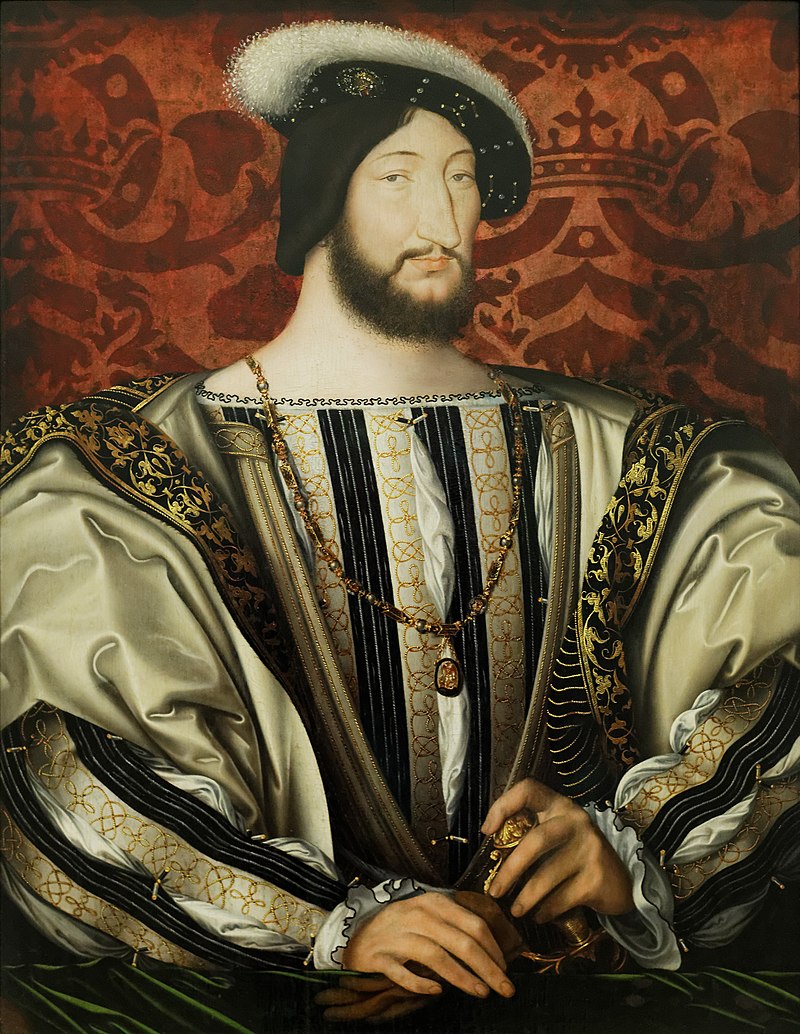
Eleanor must have been insulted and anguished when after his release, François returned to France and repudiated the Treaty of Madrid of 1526, in which he consented to marry Eleanor together with other terms. Don’t look at François as a villain: what else could he do as a monarch when he was coerced into signing this document? François’ sons – Dauphin François and Prince Henri, Duke d’Orléans (future King Henri II of France), were imprisoned in Spain, and the longer the war between Spain and France continued, the worse the living conditions of the princes were becoming. Eleanor and the emperor’s wife, Isabella of Portugal, asked Charles V to take care of the princes, but they were not heard. Charles must have started loathing François more for his unwillingness to abide by the Treaty of Madrid, and his personal vendetta with François made it impossible for him to treat the innocent children with benevolence. In contrast to him, Eleanor appealed to her brother until the boys were moved to Segovia and had a worse confinement after several attempts had been made to release them.
Louise de Savoy and Margaret of Austria – two she-wolves of their countries – signed the Peace of Cambrai in August 1529. France had to pay an astronomical ransom for the two boys, and François still had to marry Eleanor. The longer it took the Valois to collect the ransom, the worse the boys were treated. After the ransom was paid, Eleanor and the princes returned to France, where she met and married François at Roquefort-de-Marsan on the 3rd of July 1530. François was happy to be reunited with his two sons, but he welcomed Eleanor with faux joy and largely ignored her. On the way to Paris through the whole of France, Eleanor and the princes were warmly greeted by people, and the ruler arranged expensive and elaborate pageants in places where the royal cortege passed. Eleanor was called a peacemaker, and she must have enjoyed the affectionate reception by her new subjects. Louise, who was afflicted with gout, rose from her sickbed and met Eleanor. At court, Eleanor whirled in a series of extravagant pageants in French fashion. She must have been exhilarated, thinking that she would finally be content.
Eleanor’s happiness was short-lived. Neglected by her husband, she had to endure his new maîtresse-en-titre who had replaced Françoise de Foix after the ruler’s return from Madrid. The arrogant, beautiful, and influential Anne de Pisseleu d’Heilly, the new Duchess d’Étampes through her marriage to Jean de Brosse, was a queen in all but name, and François adored her absolutely. Eleanor was crowned on the 5th of March, 1531 at the Basilica of Saint-Denis. Wearing a purple velvet mantle decorated with bands of gold and an overdress trimmed with ermine, Eleanor walked down the nave, watched by Louise de Savoy, the former captive princes, Marguerite the new Queen of Navarre, and other aristocrats. François did not appear on his second wife’s coronation. When Eleanor made her entrée into Paris, the monarch observed the ceremony from the window of his lover’s house with the Duchess d’Étampes, which must have caused Eleanor pain. However, what else could be expected of François who had been treated horribly by Eleanor’s brother and was forced to marry a woman who he was not attracted to?

Soon after her betrothal to the monarch of France, diplomats began discuss her appearance in detail. The Spanish described Eleanor as a great beauty with long, strawberry blonde hair. However, the French considered her rather short, too dark (her hair), and not very attractive. Years ago, the English ambassador who had seen the girl in the Low Countries described her as beautiful and wise. Nonetheless, by the mid-1520s, Eleanor was a grown woman, and although compared to many other Habsburg women, she was not ugly, François, who was a connoisseur of female beauty, did not find her looks pleasing, and he was not interested in her as a person either.
François was courteous and polite with Eleanor in public, but he rarely visited his consort’s bedroom and ignored her. The ruler spent all his free time with Anne de Pisseleu, from time to time straying to other women, who flocked to him. Most of the nobles neglected Eleanor as well, laughing at her behind her back. Louise de Savoy and Marguerite de Navarre sided with François in everything, and Louise was delighted that Anne de Pisseleu entranced François, for she disliked her son’s first long-term mistress – Françoise de Foix, Countess de Châteaubriant. Eleanor formed a good relationship with Dauphin François, who remembered her kindness from Spain, and with François’ daughters – Princess Madeleine (future Queen of Scotland) and Princess Marguerite (future Duchess of Savoy as wife of Emmanuel Philibert de Savoy). At least, Eleanor’s non-public feud with Louise, who also disliked her despite her initial warm greetings, was a short one as Louise died on the 22nd of September, 1531, which was a profound personal loss for the Valois siblings. Soon, Prince Henri’s mistress, Diane de Poitiers, became Eleanor’s lady-in-waiting.
The King of France refused to perform his marital duties, and this became widely known at European courts. Sir Francis Bryan, who was once dispatched to France, said later:
“… being both in one house they lie not together once in four nights; another he speaks very seldom unto her openly; another, he is never out of my lady’s chamber, and all for Hely’s [sic] sake, his old lover . . . he has also divers times ridden six or seven miles from the Queen and lain out four or five days together, as it is said, at the houses of his old lovers.”
In spite of her husband’s repugnance towards her, Eleanor of Austria was infatuated with François, perhaps hoping that he would change his attitude to her. Besides, she seems to have been passionate and quite eager for intimacies, which was used by the Valois family as a pretext to explain why François did not bed her often. During her conversation with Thomas Howard, Duke of Norfolk, Queen Marguerite of Navarre was unusually blunt when she said:
‘He [François] neither lay with her nor yet meddled with her.”
Marguerite was even more direct when she allowed candor to slip from her lips:
‘The queen is very hot in bed and desireth to be too much embraced… I would not for all the good in Paris that the king of Navarre were no better pleased to be in my bed than my brother is to be in hers.”
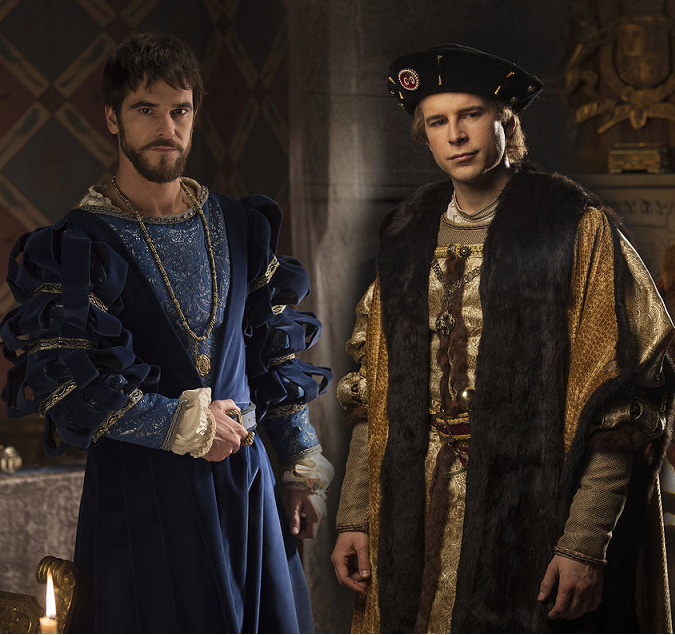
Over time, the Duchess d’Étampes took almost all of the queen’s public roles from Eleanor. The neglected queen must have grieved a great deal when Dauphin François, one of her few true friends in France, died in 1536 either of natural causes (perhaps consumption) or was poisoned. In 1538, a war broke out between Charles V and François I after the French troops had occupied Piedmont and Savoy. Once more, Eleanor acted as a peacemaker when she headed to the fortified city of Aigues-Mortes in Provence in the summer of 1538. During the meeting with Charles, Eleanor confided in him about her personal sorrows after they had greeted each other warmly. Eleanor convinced Charles to grudgingly pay respects to the Duchess d’Étampes in order not to infuriate François and not to jeopardize the alliance. Then Eleanor’s misery continued.
It must have been exceedingly frustrating for Queen Eleanor that all her attempts to act as arbiter between her husband and her brother were futile. There could be no peace between Charles V and François I: no monarch could forgive and forget about the humiliating treatment of him and his progeny in captivity. Charles loathed François largely because the Spanish and Habsburgs were taught to hate everything French from childhood, and his feud with the Valois ruler deepened this feeling over time. Eleanor made one strategic mistakes: she did not try to assimilate in France, keeping most of her Spanish habits and preferring to wear Spanish fashions, although she spoke French well with accent. This additionally alienated François and Marguerite from her, while Anne de Pisseleu was glad to accept François in her arms. In 1541, several of Eleanor’s ladies were dismissed for slandering the Duchess D’Étampes, as well as her other foreign ladies.
After the fall of Boulogne into the English hands in 1544, France and Spain, which had been at war again for some time, signed the Treaty of Crépy. The emperor renounced his claim to the Duchy of Burgundy; François renounced his claims to Naples, Flanders, and Artois. Eleanor, who always desired peace between her spouse and her brother, must have been happy. Nothing changed during the next three years, and when François died on the 31st of March 1547, Eleanor stayed at the convent of Poissy near Paris. As she did not know about the monarch’s illness, the queen was shocked, and according to contemporary sources, she was pale and sad. Despite her miserable marriage to François I of France, Eleanor’s kind heart was torn apart in anguish.
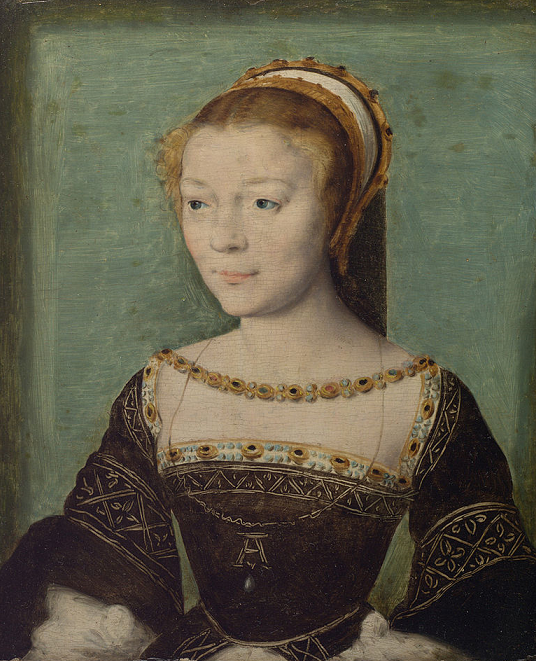
Although she could have remained in France, Eleanor departed for Spain in November 1548. In January 1555, Eleanor witnessed the abdication of Emperor Charles in favor of their brother, Ferdinand. Her daughter, Maria of Portugal, refused to go to Spain to live with her mother; Maria’s marriage to Philip of Spain, which was discussed before, did not occur. Nonetheless, Maria met Eleanor at Badajoz near Extremadura, Spain, in 1558, but then the Portuguese princess returned home. A disheartened Eleanor fell ill on the way from Badajoz and died on the 25th of February, 1558. Always her brother’s marriage pawn, she was mourned by Charles V, who must have felt his own approaching end. At first, Eleanor was interred in Llieda in Catalonia, but her remains were later transferred to the monastery of the Royal Site of San Lorenzo de El Escorial.
Eleanor of Austria was a queen of two kingdoms, as well as a mother who could not have lived with her only daughter. Maybe if François had overlooked his hatred of the Habsburgs and at least performed his conjugal duties, they would have had children, and Eleanor could have found consolation in them. Eleanor was pregnant in 1532, but she suffered a miscarriage, and at the time, François spent days by her bed, trying to console her. Had their child survived and had it been a boy, the Valois dynasty would probably not gone extinct on the male line after the death of King Henri III of France in 1589. However, François did not sleep with Eleanor, for he had 3 sons with his first wife, Claude. If François had suspected what would happen to his male descendants, he could have sired several children on Eleanor. But men might be pitiless to those whom they do not love, and monarchs do not forget harsh offences towards their royal Majesty.
All images are in the public domain.
Text © 2020 Olivia Longueville





